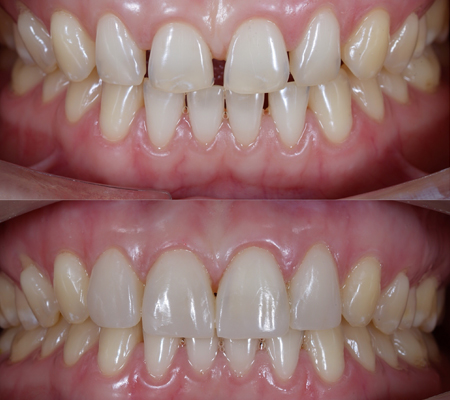AESTHETIC DENTISTRY
Bonding Applying
 The bonding process is a procedure performed to give the teeth a more aesthetic appearance with a composite filler that is compatible with the tooth color, without any etching on the tooth. Since no etching is performed, no damage is caused to the teeth. It is a preventive treatment method. It is a technique that is often applied for the purpose of smile design.
The bonding process is a procedure performed to give the teeth a more aesthetic appearance with a composite filler that is compatible with the tooth color, without any etching on the tooth. Since no etching is performed, no damage is caused to the teeth. It is a preventive treatment method. It is a technique that is often applied for the purpose of smile design. With composite fillings, color changes in the tooth can be masked and minor deformities can be corrected. It is a painless procedure that can be performed directly in the patient's mouth in one session and does not require anesthesia. If an unpleasant or unorthodox result is obtained, the tooth can be returned to its former state by removing it, since no damage is caused to the tooth. Its cost is lower than porcelain veneers.
Unlike porcelain, composites can show coloration over time. In order to prevent this, oral care should be very good and the necessary polishing and polishing procedures should be performed with regular dental checkups.
On which teeth can the bonding process be applied?
Bonding can be applied on separated teeth, discolored teeth, deformed teeth, short teeth, small fractures and teeth whose aesthetic appearance is not liked. It is often preferred in the anterior region of the teeth.
What are the things to be considered after the bonding process?
Excessive consumption of dyestuffs such as tea, coffee, cigarettes may lead to discoloration in composites as well as in natural teeth. These color changes can be easily removed by polishing processes applied on the controls. Paraphunctional habits such as biting hard foods and clenching teeth, which can also damage natural teeth, can also damage composite fillings.


 Kocatepe Mah. 33. Sk. No:5/A Bayrampaşa - İstanbul
Kocatepe Mah. 33. Sk. No:5/A Bayrampaşa - İstanbul 







